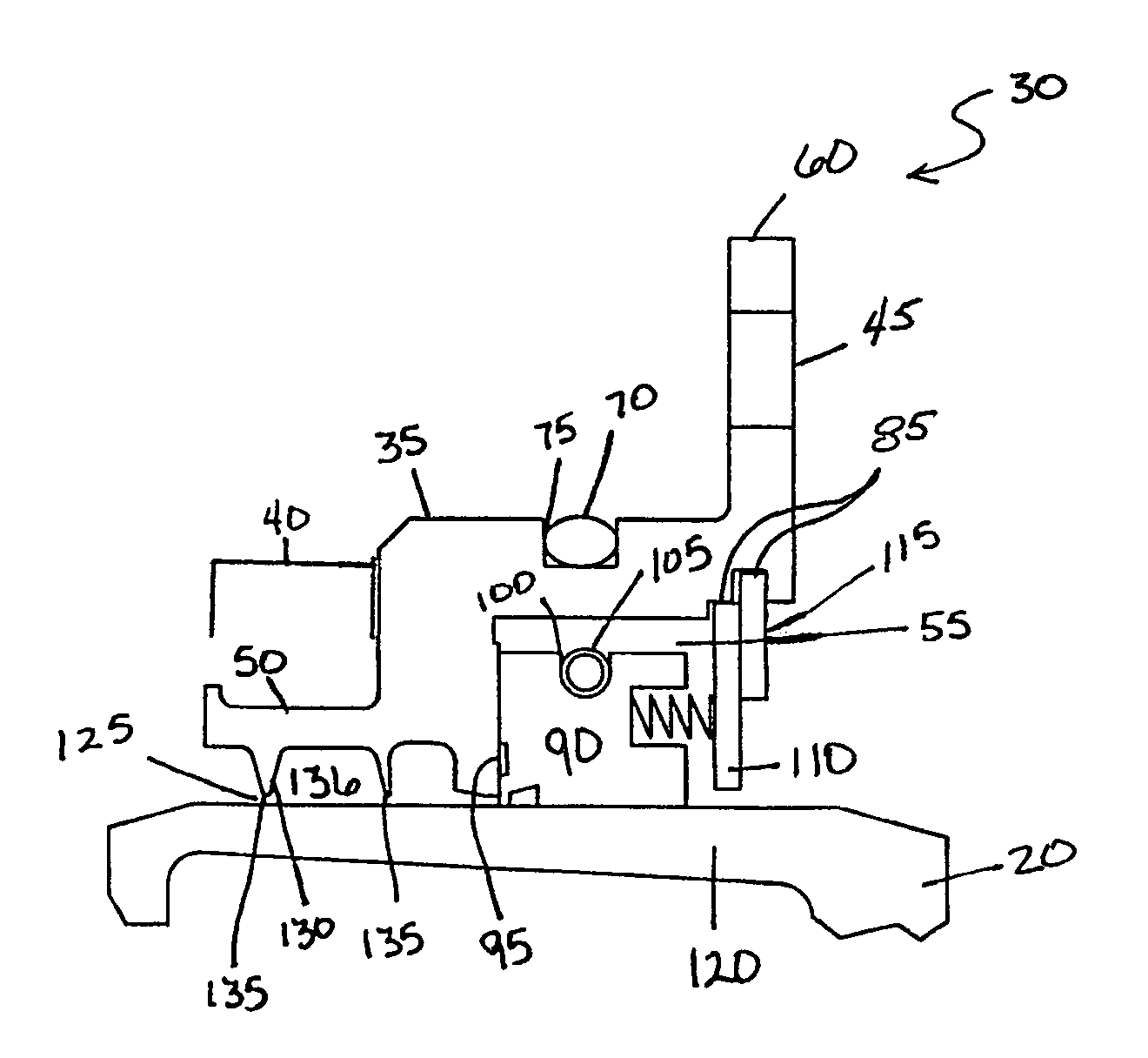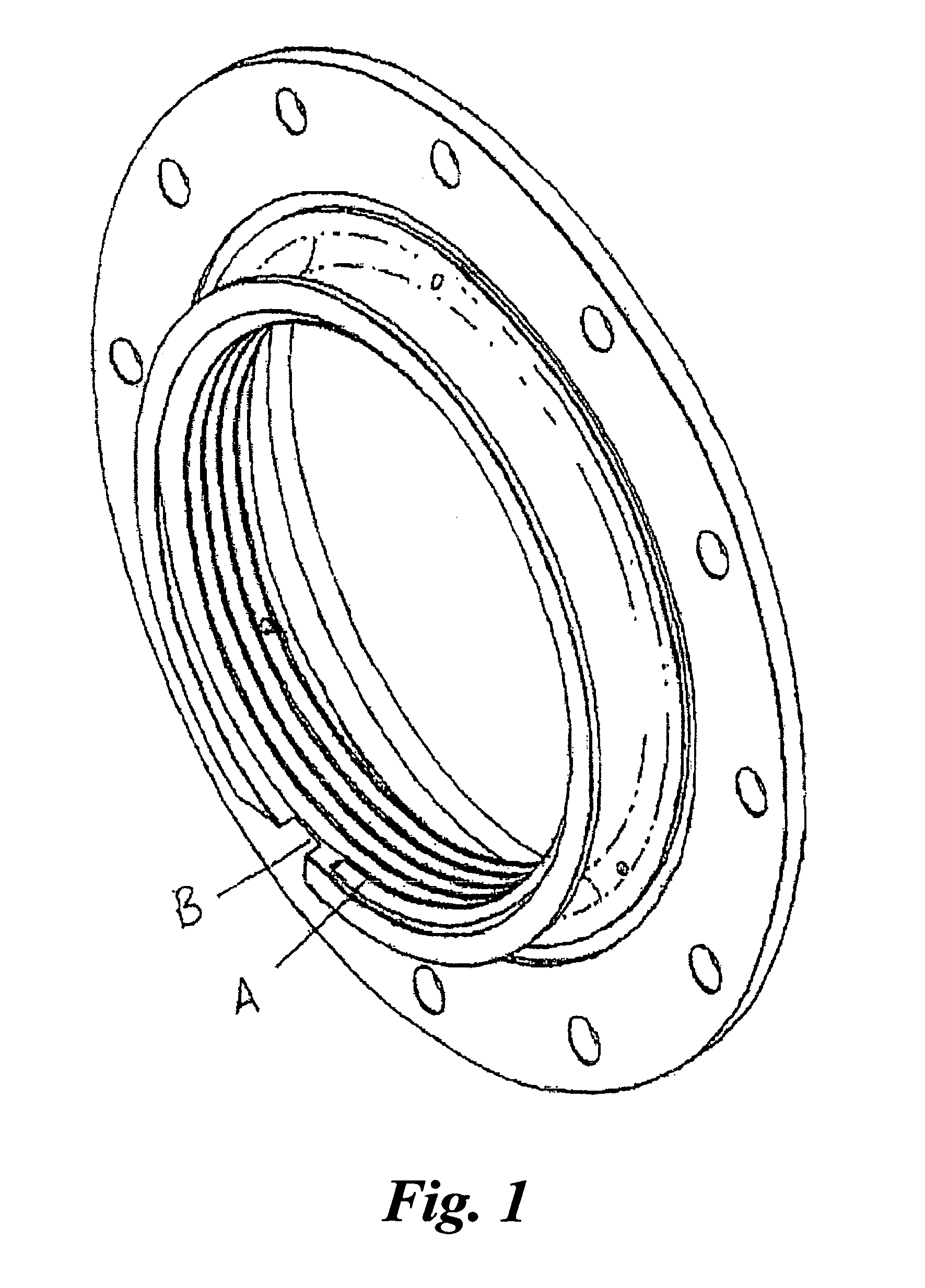Windback device
a windback device and windback technology, applied in the direction of engine seals, climate sustainability, sustainable transportation, etc., can solve the problems of affecting the performance of gas turbines, affecting the sealing surface, and altering the oil, so as to reduce the build-up of fluid
- Summary
- Abstract
- Description
- Claims
- Application Information
AI Technical Summary
Benefits of technology
Problems solved by technology
Method used
Image
Examples
example 1
Dimensions of Windbacks Tested
[0060]Nine different windback designs of various pitch angles and numbers of inclined threads were tested against standard designs for evaluating the improved efficiency and effective flow rates of the inclined threads. These designs include a 0.06 inch pitch windback design (No. 14167-12), a 6 inclined thread windback design (No. 14167-02), a tapered bore windback design (No. 14167-13), a standard windback design (No. 14167-01), a 3 inclined thread windback design (No. 14167-07), (0.125 inch) pitch windback design (No. 14167-11), a 4 inclined thread windback design (No. 14167-10), a 6 inclined thread windback design (No. 14167-09), a 24 inclined thread windback design (No. 14167-14), and a 12 inclined thread windback design (No. 14167-08). These improved thread designs, and the standard design, were machined into windbacks in accordance with the present invention. The specific dimensions of each windback, including thread diameter, radial clearance, ax...
example 2
Testing Procedures
[0062]Prior to testing the foregoing 10 windback test designs a dry dynamic test was performed without a windback to establish the baseline flow rates associated with the shaft rotation. More specifically, referring to FIG. 11, a test chamber was prepared without a windback and the air flow, indicated by the arrows of FIG. 11, generated from the rotation of the shaft was measure by a flow meter. The shaft was rotated in an environment with no PSID, as measured by a water manometer, with a set slave seal buffer at 10 psig. The seal chamber was vented to the atmosphere and no oil was fed through the runner. The shaft was then rotated at 2,000 rpm and baseline air flow measurements were taken at 5 minute intervals for 20 minutes. The shaft was then rotated at 4,000 rpm and baseline air flow measurements were taken at 5 minute intervals for 20 minutes. The shaft was then rotated at 6,000 rpm and baseline air flow measurements were taken at 5 minute intervals for 20 min...
example 3
Results of Testing Procedures
[0065]As illustrated in FIG. 13, the results of the foregoing testing procedures indicate that windback designs with 12, 24, 6, 4, and 3 inclined threads all had a greater flow efficiency than the standard windback design. Additionally, the windback with the 0.125 pitch angle also provided greater flow efficiency. Accordingly, the results of the testing procedure confirmed that the threads of the present windback design alter the air flow rate generated by the rotation of the runner with greater efficiency that those designs known in the art. Accordingly, the present windback device redirect fluid entering the space between a windback and the shaft back into the sump with greater efficiency that the standard windback designs.
PUM
 Login to View More
Login to View More Abstract
Description
Claims
Application Information
 Login to View More
Login to View More - R&D
- Intellectual Property
- Life Sciences
- Materials
- Tech Scout
- Unparalleled Data Quality
- Higher Quality Content
- 60% Fewer Hallucinations
Browse by: Latest US Patents, China's latest patents, Technical Efficacy Thesaurus, Application Domain, Technology Topic, Popular Technical Reports.
© 2025 PatSnap. All rights reserved.Legal|Privacy policy|Modern Slavery Act Transparency Statement|Sitemap|About US| Contact US: help@patsnap.com



